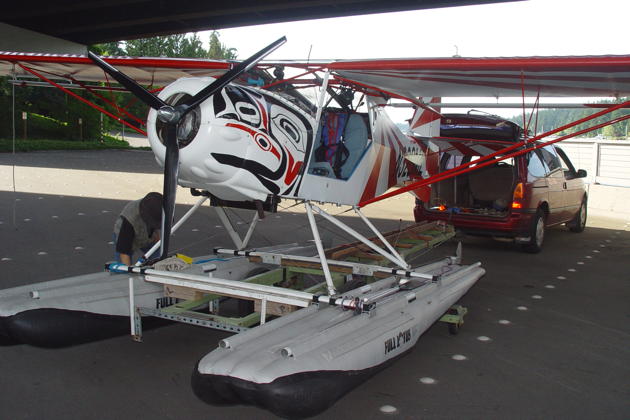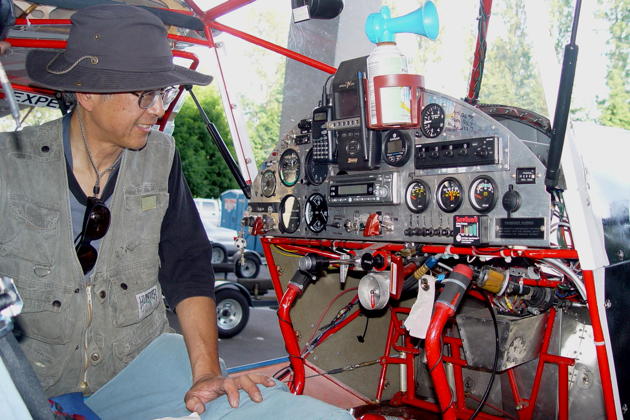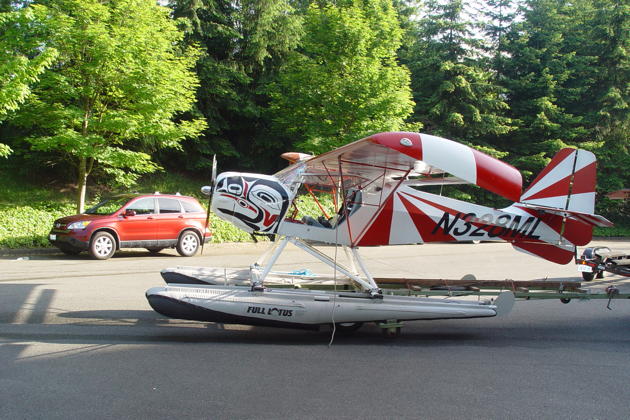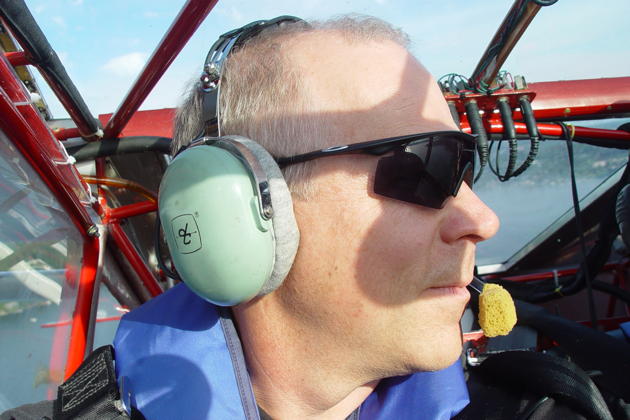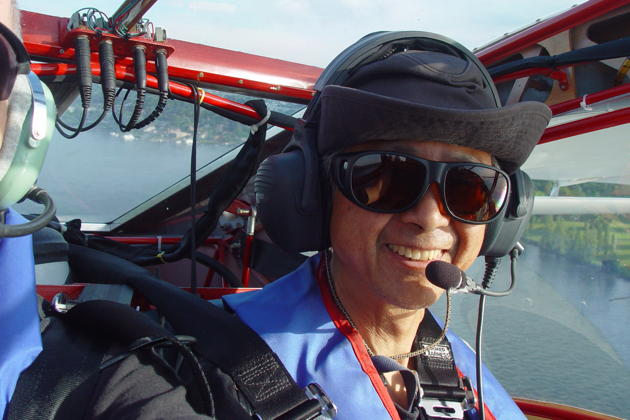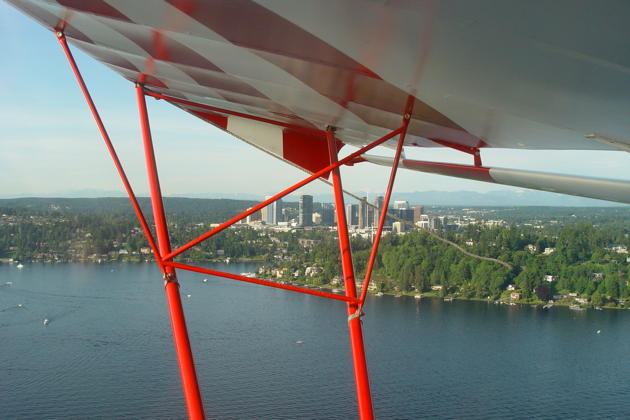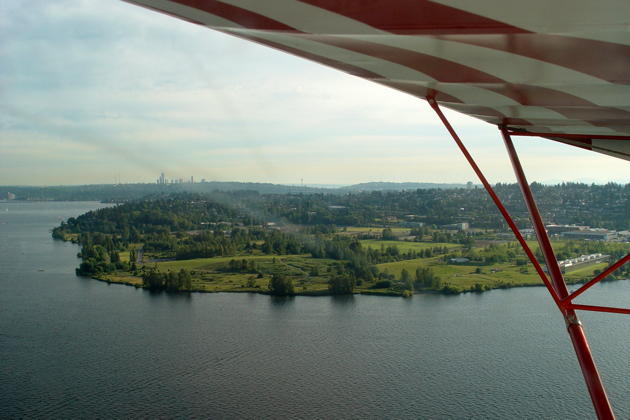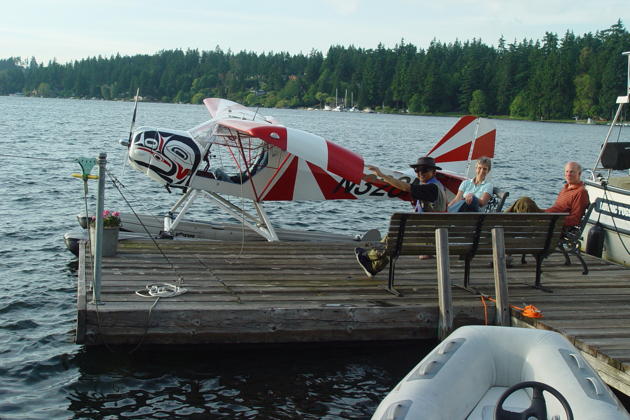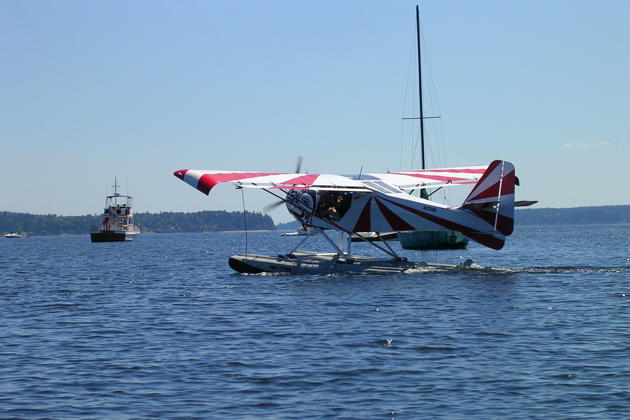FlightLog Archive
∟Aircraft Flown
Flying the Kitfox on Floats - Jun 2008
A few years ago, Matthew Lum trailered his Kitfox, built with both floats and a fixed gear option, to a summer celebration at a company outdoor event. I was able to crawl all around Matthew's Kitfox and marveled at his handiwork and efforts involved to build this beautiful homebuilt. We talked about its flying characteristics, the fun of low altitude cruising with the windows open, and planned to trade some Kitfox flying for some high performance sailplane flying.
Denney Aerocraft produced the first Kitfox kit in November of 1984. The Kitfox was designed as a lightweight, two-place sport aircraft with excellent STOL (Short Takeoff and Landing) performance and the ability to operate from short and unimproved airfields. The Kitfox features folding wings and is easily trailered, allowing owners keep their Kitfox at home in a single car garage. Since 1984, over 4,500 Kitfox kits have been delivered to builders throughout the United States, Canada, and over 42 foreign countries. After a number of ownership changes, in April 2006, Kitfox Aircraft LLC was formed, offering support for the 7 Kitfox series.
Matthew's Kitfox is formally a SkyStar Kitfox 4-1200. Matthew's total building time was 1,300 hours over a ten-year period (including four years off to build a house). It's powered by a Rotax 582 with a three-bladed, electrically adjustable 66-inch Ivoprop. First flight for N328ML was March 1, 2003.
After a few job changes, I was again back in the same area that Matthew used to work, so I made contact to see if his Kitfox was still flying. It was, and Matthew and I planned to meet when some semblance of summer weather finally made its way to Seattle. On June 20th, just as summer arrived, I met Matthew under the I-90 bridge at the Mercer Island boat launch, where Matthew gave me a full walk around and described the airplane and cockpit instruments.
After pre-flighting, Matthew showed off his ground maneuvering skills by backing the Kitfox down the boat ramp into Lake Washington, where we maneuvered the Kitfox back to nudge up against the shore. I jumped from shore, to the float, into the cockpit, where we started and warmed up the Rotax engine, while pointed into shore. We shut down briefly, and Matthew jumped out, and rotated us to point away from shore. We quickly re-started, and smoothly taxied out onto Lake Washington, where I got a feel for the water rudders, which were quite effective, even at slow speeds. Matthew pointed me north, where we cleared an area for our ‘runway’ among the many boats out on this glorious early summer evening.
After a quick final 360-degree turn in the water to clear the area, Matthew throttled up and we began our takeoff run. Since we were within 50 pounds of max gross takeoff weight, our takeoff roll was not exactly ‘an F-15 in full afterburner’ style. We did soon accelerate onto ‘the step’, and began to bounce on the slightly rough waters, and finally broke free and became airborne after a final bounce.
The forward visibility from the Kitfox cockpit is decent in the climbout attitude, and improves when leveling off. The side visibility is outstanding, especially with the side windows open, which we checked out halfway through the flight.
The Kitfox has the basic requirement for any ‘real’ airplane – a control stick, and has very light aileron forces. The wing includes a flaperon design, which functions both as ailerons and flaps. The cruise setting for the Rotax engine hummed us along at a brisk 6000 RPM, giving us a 60-70 knot cruise speed, just fine for sightseeing.
We climbed to our maximum altitude for the day (800 feet above the water) then cruised between 600 and 800 feet enjoying the lovely summer Seattle weather, and toured the Lake Washington shoreline. We cruised by Sand Point, around Bellevue and Kirkland, and checked out the many sailboats in the water. Matthew demonstrated a low altitude pattern and approach near Sand Point, and then went around before touching down due to rougher water conditions in the north. After more cruising around the lake, we set up for a final approach and a short landing abeam Mercer Island, avoiding the larger wakes as we slowed after touchdown.
After that nice touchdown, we maneuvered around some more wakes, and then got waved into a nearby floating boat dock at Matthew's neighbor's, Fred and Martha Weiss. We shut down and floated to the Weiss' Mercer Island boat dock, where we tied up and talked flying, while enjoying the evening breezes on the water.
After jumping back in the cockpit and re-starting, Matthew let me taxi back to the boat launch, where we reversed our earlier launch procedure, loaded the Kitfox back on the trailer, and helped Matthew fold the wings. I then followed Matthew the short distance to his Mercer Island home, where we shoehorned the Kitfox back into one stall of his garage.
Matthew, thanks for the enjoyable flight, and good luck as you build your next bird, the Cozy canard four-seater. OK, after that taildragger certification, I really need to look into a seaplane rating...!
 KASPRZYK
KASPRZYK